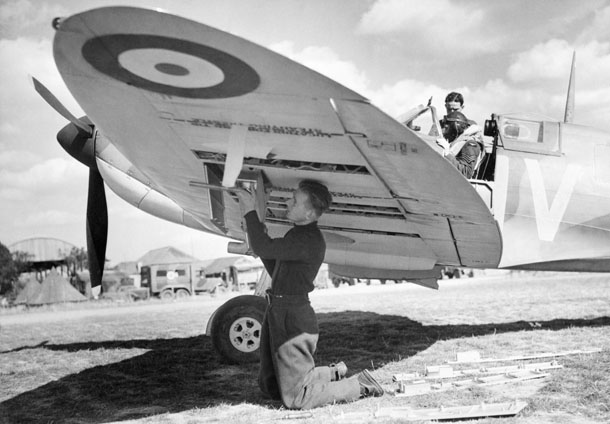
Two Wars, Two Airforces, One Home
1914-1918 and 1939-1945 RFC & RAF, USAAC & USAAF
On top of a hill southwest of Cambridge lies Manor Farm, home to 100 years of airfield history. It was here in 1918 that the RFC authorities decided to build a Class A aerodrome for the defense of Southeast England and for training purposes.
Building commenced on Bedford hangars with the addition of canvas hangars, and quarters for the pilots and ground crews. Of all who were stationed here, the RFC Training Group 31 and the USAAC maintenance 195 Sqdn. were the most prominent units during WWI.
Fowlmere proved to be a popular destination for training flights, which are also attested to by numerous crashes as depicted above.
In the early 1920s, the airbase was decommissioned and most of the buildings were demolished and the airfield returned to farming.

Serving as a satellite for Duxford airbase just down the road, the airfield was reactivated in 1940, Nissen huts for the pilots and crews were put up for accommodation, all just in time for the Battle of Britain. The most famous squadron to be based here during those desperate months was No. 19 Sqdn. with Spitfire Mk Ia aircraft and the first squadron to have the troublesome cannon armed MkIb, flying as part of Douglas Bader's Big Wing with the Duxford based Hurricanes .
Later, Fowlmere became home to the Enemy Aircraft Testing Establishment and saw numerous squadrons use
the base for brief periods before the airfield was eventually turned over to the USAAF, who were first interested in developing it into another bomber base, but decided to turn it into a fighter station.

The Friendly Invasion of Fowlmere began in 1944 with the airfield being turned over to the 339th Fighter Group flying P-51 Mustangs. After a brief work up period, the unit first flew on deep penetration escorts into Germany and then on ground attack missions to destory rail transportation and enemy airfileds during the push into Germany.
While the 339th FG was at Fowlmere, they acheived a number of "firsts". They were the first unit to destroy over 100 enemy aircraft by strafing in a single day, the first to test the new "G" suits, and the first to adapt the British gyroscopic gunsight for the P-51 to aid accurate deflection shooting.
After the Americans left, the site was used as the Polish Resettlement Camp between 1946 and 1958.
Today, Manor Farm is also home to the Fowlmere Airfield Museum.
